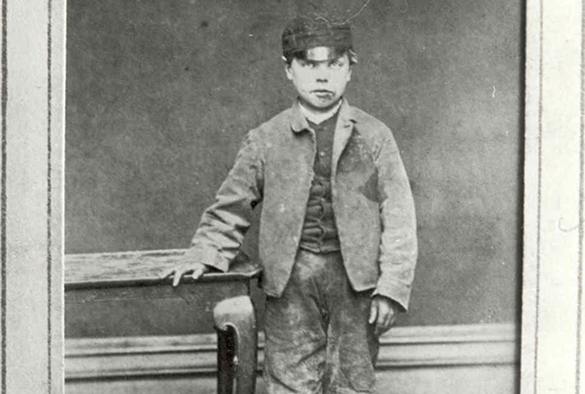The name derives from the reign of Queen Victoria in the United Kingdom in the latter half of the 19th century, a time when England ruled the western world culturally and every region militarily. The Victorian Era brought with it with the creation of a paid police force(2) rather than the local constable system that had been around since the Tudors. (3)

Source: University of Liverpool
The reason the police force was created was because in 1800 there were 5,000 crimes but by the time Victoria took the throne there were 20,000. In hindsight, the Industrial Revolution is blamed and it's a legacy that still lives today: Wales, England and Scotland hold the top three spots for crime for the developed world. The problem is 'recidivism' - repeat offenders - and so it remains a hot topic. In Britain today, 73 percent of young people convicted of a crime will get caught committing another one within a year but in the Victorian era, only 22 percent of young criminals would have another offense for the rest of their lives. And only 6 percent would be what we consider career criminals.(4)
Getting caught was 'a wake-up call' about choices and reform schools were a bad place. Today, juvenile facilities and prisons are blamed for creating permanent criminals but in the Victorian era they were far worse - and so young people did not want to go back. Prison then was reform school and about silence, hard labor and moral guidance, or it was an industrial prison until age 16. They were often charities rather than government-controlled.
A group of sociologists recently conducted a "cradle to grave" look at young Victorian criminals, gleaned from four reform institutions in Merseyside and Cheshire: the Stockport Industrial School, the Bradwall Reformatory and two training ships in the Mersey where young offenders learned potential navy skills. Thanks to digital archives, they were able to find 500 people with detailed records and could track things like where they lived, marriages and eventual death.
Professor Pamela Cox of the University of Essex told the British Sociological Association's annual conference in Glasgow that a key reason for low recidivism was that offenders were put on supervised apprenticeship-type schemes after release. "In part at least it seems it is connected with the requirement that all those leaving the industrial and reformatory schools go into some kind of apprenticeship, or into the military. This set them up with a skill and gave them the routine of working that stood them in good stead in the future."
Today, the United States and Great Britain have a professional standing army so overwhelming it with criminals would be a bad idea. And it is a lot more difficult to find a job with a criminal record so learning a trade won't have the same upside.
NOTES:
(1) And not all that repressed, they just didn't wear bikinis in parades. In some ways, they were more bizarre than today. Aleister Crowley was an "occultist, bisexual libertine, recreational drug user, founder of the Thelemic religion, leader of the Ordo Templi Orientis (O.T.O.), and all-around scary wicked person” who wrote bad poetry about every imaginable sexual taboo.
(2) Still called "Bobbies" because Sir Robert Peel sponsored the law that created a bureaucratic police force in London, which was disliked but successful, and that paved the way for the police force across the country during Victoria's reign.
(3) In the "Sherlock Holmes" novels near the end of the period, Holmes was better than the police because it was a blue-collar occupation whereas he was an intellectual doing it out of desire - though the police were not able to trip up fictional criminal masterminds, they got a lot correct and it spurred innovation. Sir Francis Galton created a Portable Fingerprint Kit in 1892.

(4) Being caught young then was the best thing that could happen. In Victorian times, as now, the re-offending rate among adults who went to prison was 80 percent.





Comments